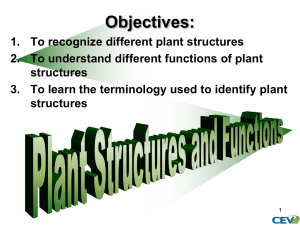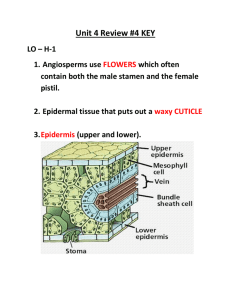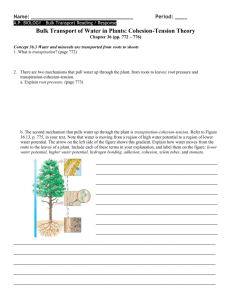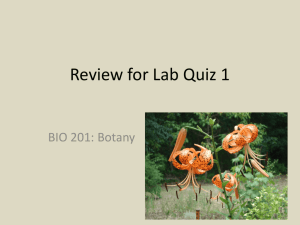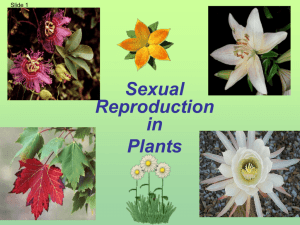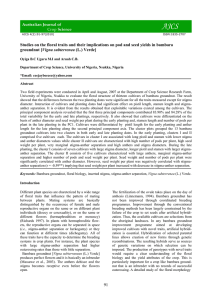PLANT REVIEW Plants use Sunlight to carry out photosynthesis
advertisement
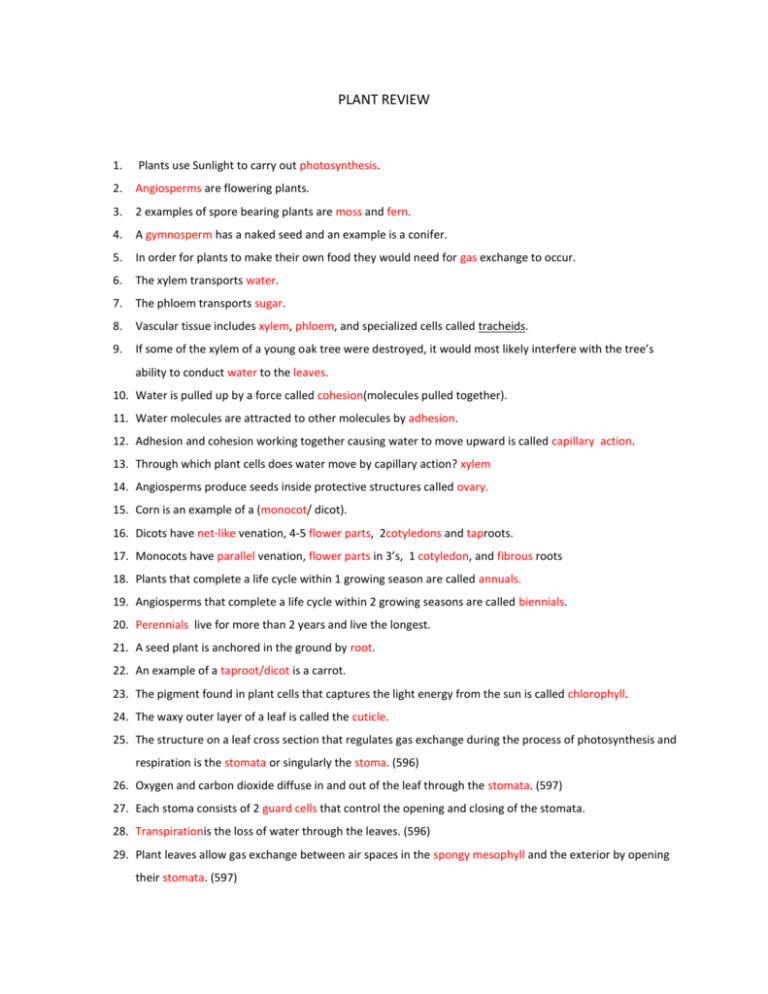
PLANT REVIEW 1. Plants use Sunlight to carry out photosynthesis. 2. Angiosperms are flowering plants. 3. 2 examples of spore bearing plants are moss and fern. 4. A gymnosperm has a naked seed and an example is a conifer. 5. In order for plants to make their own food they would need for gas exchange to occur. 6. The xylem transports water. 7. The phloem transports sugar. 8. Vascular tissue includes xylem, phloem, and specialized cells called tracheids. 9. If some of the xylem of a young oak tree were destroyed, it would most likely interfere with the tree’s ability to conduct water to the leaves. 10. Water is pulled up by a force called cohesion(molecules pulled together). 11. Water molecules are attracted to other molecules by adhesion. 12. Adhesion and cohesion working together causing water to move upward is called capillary action. 13. Through which plant cells does water move by capillary action? xylem 14. Angiosperms produce seeds inside protective structures called ovary. 15. Corn is an example of a (monocot/ dicot). 16. Dicots have net-like venation, 4-5 flower parts, 2cotyledons and taproots. 17. Monocots have parallel venation, flower parts in 3’s, 1 cotyledon, and fibrous roots 18. Plants that complete a life cycle within 1 growing season are called annuals. 19. Angiosperms that complete a life cycle within 2 growing seasons are called biennials. 20. Perennials live for more than 2 years and live the longest. 21. A seed plant is anchored in the ground by root. 22. An example of a taproot/dicot is a carrot. 23. The pigment found in plant cells that captures the light energy from the sun is called chlorophyll. 24. The waxy outer layer of a leaf is called the cuticle. 25. The structure on a leaf cross section that regulates gas exchange during the process of photosynthesis and respiration is the stomata or singularly the stoma. (596) 26. Oxygen and carbon dioxide diffuse in and out of the leaf through the stomata. (597) 27. Each stoma consists of 2 guard cells that control the opening and closing of the stomata. 28. Transpirationis the loss of water through the leaves. (596) 29. Plant leaves allow gas exchange between air spaces in the spongy mesophyll and the exterior by opening their stomata. (597) 30. The column-like layer that is just under the epidermis of a leaf is called the palisade mesophyll. 31. Seeds can be dispersed by wind, water, birds and insect. 32. Berries are dispersed by birds. 33. Dandelions or “helicopter” type seeds are dispersed by wind. 34. A specialized stem that grows horizontally underground and allows the plant to spread rapidly is called a rhizome. 35. Label the following parts: stigma, style, ovary, ovule, carpel (pistil), anther, filament, stamen, petal, sepal, peduncle (stem), 1. Stigma 2. Style 3. Ovary 4. Ovule 5. Carpel or pistil 6. Anther 7. Filament 8. Stamen 9. Petal 10. Peduncle or stem 11. Sepal 36. The fruit is a ripened ovary. 37. Pollen grains are produced in the anther. 38. Which structure receives the pollen during pollination? Stigma. 39. Which structures are the female parts? Stigma, style, ovary, ovule-carpel or pistil. 40. Which structures are the male parts? Anther, filament- stamen.

